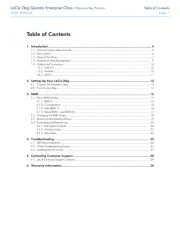Mikrotik OmniTIK 5 Bedienungsanleitung
Mikrotik
Nicht kategorisiert
OmniTIK 5
Lies die bedienungsanleitung für Mikrotik OmniTIK 5 (6 Seiten) kostenlos online; sie gehört zur Kategorie Nicht kategorisiert. Dieses Handbuch wurde von 2 Personen als hilfreich bewertet und erhielt im Schnitt 4.6 Sterne aus 1.5 Bewertungen. Hast du eine Frage zu Mikrotik OmniTIK 5 oder möchtest du andere Nutzer dieses Produkts befragen? Stelle eine Frage
Seite 1/6

OmniTIK series
OmniTIK series
OmniTIK series
OmniTIK seriesOmniTIK series
This User Manual covers OmniTik models:
RBOmniTikG-5HacD (OmniTIK 5 ac),RBOmniTikPG-5HacD (OmniTIK 5 PoE ac),RBOmniTikUPA-5HnD (OmniTIK 5 PoE),RBOmniTikU-5HnD (OmniTIK
5)
Technical specifications, brochures, and more info about products at https://mikrotik.com/products
Configuration manual for software with additional information can be found at {+}https://mt.lv/help+
MikroTik devices are for professional use, if you do not have qualifications please seek a consultant https://mikrotik.com/consultants
Safety Information:
Before you work on any equipment, be aware of the hazards involved with electrical circuitry, and be familiar with standard practices for preventing
accidents.
Ultimate disposal of this product should be handled according to all national laws and regulations.
All installation methods for mounting an access point on any wall surface is subject to the acceptance of local jurisdiction.
The Installation of the equipment must comply with local and national electrical codes.
This product is intended to be mounted outdoors on a pole. Please read the mounting instructions carefully before beginning installation. Failure to use the
correct hardware and configuration or to follow the correct procedures could result in a hazardous situation for people and damage to the system.
Use only the power supply and accessories approved by the manufacturer, and which can be found in the original packaging of this product.
Read the installation instructions before connecting the system to the power source.
We cannot guarantee that no accidents or damage will occur due to the improper use of the device. Please use this product with care and operate at your
own risk!
In the case of device failure, please disconnect it from power. The fastest way to do so is by unplugging the power plug from the power outlet.
It is the customer's responsibility to follow local country regulations, including operation within legal frequency channels, output power, cabling
requirements, and Dynamic Frequency Selection (DFS) requirements. All Mikrotik radio devices must be professionally installed.
This is a class A device. In a domestic environment, this product might cause radio interference in which case the user might be required to take adequate
measures.
IMPORTANT: Exposure to Radio Frequency Radiation.
IMPORTANT: Exposure to Radio Frequency Radiation.
IMPORTANT: Exposure to Radio Frequency Radiation.
IMPORTANT: Exposure to Radio Frequency Radiation.IMPORTANT: Exposure to Radio Frequency Radiation.
This equipment complies with the IC radiation exposure limits set forth for an uncontrolled environment. This equipment should be installed and operated
with a minimum distance of 30 cm between the radiator and any part of your body.
First use
First Ethernet is always configured as a WAN port (protected by a firewall, enabled DHCP client, and disabled MAC connection/discovery). Other Ethernet
ports and wireless interfaces are added to the local LAN bridge with 192.168.88.1/24 address set and configured DHCP server.
Open the bottom lid.
Connect your PC or LAN cables to the Ethernet ports.
Connect power source as described in the Powering section.
Set LAN computer IP configuration to automatic (DHCP).
The Default IP address of the unit is 192.168.88.1, open this address in your web browser to start the configuration. The username is admin and
there is no password . (or, for some models, check user and wireless passwords on the sticker)
We recommend clicking the "Check for updates" button and updating your RouterOS software to the latest version to ensure the best
performance and stability.
Choose your country, apply country regulation settings and set up your password on the screen that loads.
We recommend clicking the "Check for updates" button and updating your RouterOS software to the latest version to ensure the best performance and
stability. RouterOS includes many configuration options in addition to what is described in this document. We suggest visiting the RouterOS documentation
page to get yourself accustomed to the possibilities: .https://mt.lv/help
In case an IP connection is not available, the Winbox tool ( ) can be used to connect to the MAC address of the device from the LAN https://mt.lv/winbox
side (all access is blocked from the internet port by default).
This device needs to be upgraded to RouterOS v7.11.2 or the latest version to ensure compliance with local authority regulations.
It is the end users' responsibility to follow local country regulations, including operation within legal frequency channels, output power, cabling
requirements, and Dynamic Frequency Selection (DFS) requirements. All MikroTik radio devices must be professionally installed.

1.
2.
3.
Powering
The device accepts power in the following ways:
Ethernet port accepts passive PoE 12-57 V DC . For Omnitik 5 models, 11-30 V.
The power consumption under maximum load can reach 14 W.
PoE version accepts 12-57 V DC with a maximum consumption of 18W, with attachments 66 W.
Connecting to a PoE Adapter:
Connect the Ethernet cable from the device to the PoE+DATA port of the PoE adapter;
Connect an Ethernet cable from your local network (LAN) to the PoE adapter;
Connect the power cord to the adapter, and then plug the power cord into a power outlet.
Power output
Applies only to OmniTik 5 PoE ac:
This device can supply PoE power to external devices from its Ethernet ports. This is convenient as you don't need any
additional PoE injectors to power other devices. The output voltage will be the same as the input voltage. The maximum power output of each Ethernet
port in this mode is 1A (the total maximum for all ports is 2A). To reach maximum output power it is recommended to use a high voltage adapter together
with the included PoE injector to power the OmniTik unit (48/56V), because 802.3af/at the input is limited to 30W and OmniTik will consume up to 15W by
itself. Once Power Output is enabled in RouterOS, the Ethernet LED adds red color to it (green means Ethernet link is made, red means power but no link,
red and green both means there is link and power).
Mounting
On the back of the device, slide the included pole mount adapter with the clip facing forward, until the clip clicks into place.
Use the included hose clamp to attach the unit to a pole or mast. Adjustable QuickMount adapters are available separately.
The OmniTik has a locking screw that secures the port door, it can be closed with a 5mm hex screwdriver.
Grounding

Extension slots and ports
Five Gigabit Ethernet ports, supporting automatic cross/straight cable correction (Auto MDI/X), so you can use either straight or cross-over cables
for connecting to other network devices.
One integrated wireless 5GHz 802.11a/n/ac, 2x2 MIMO with built in grid antenna, max gain 7.5dBi.
Buttons and Jumpers
The reset button has the following functions:
Hold this button during boot time until the LED light starts flashing, release the button to reset RouterOS configuration (total 5 seconds).
Keep holding for 5 more seconds, LED turns solid, release now to turn on CAP mode. The device will now look for a CAPsMAN server (total 10
seconds).
Or Keep holding the button for 5 more seconds until LED turns off, then release it to make the RouterBOARD look for Netinstall servers (total 15
seconds).
Regardless of the above option used, the system will load the backup RouterBOOT loader if the button is pressed before power is applied to the device.
Useful for RouterBOOT debugging and recovery.
Operating System Support
The device supports RouterOS software with version number v6.46. at or above what is indicated in the RouterOS menu /system resource. Other
operating systems have not been tested.
Federal Communication Commission Interference Statement
Model
Model
Model
ModelModel FCC ID
FCC ID
FCC ID
FCC IDFCC ID
RBOmniTikG-5HacD TV7OMNITIKPG5HACD
RBOmniTikPG-5HacD TV7OMNITIKPG5HACD
RBOmniTikUPA-5HnD TV7RBOMNITIK5HND
RBOmniTikU-5HnD TV7RBOMNITIK5HND
This equipment has been tested and found to comply with the limits for a Class A digital device, pursuant to Part 15 of the FCC Rules.
These limits are designed to provide reasonable protection against harmful interference in a commercial installation.
This equipment generates, uses, and can radiate radio frequency energy and, if not installed and used in accordance with the instruction manual, may
cause harmful interference to radio communications. Operation of this equipment in a residential area is likely to cause harmful interference in which case
the user will be required to correct the interference at his own expense.
The installation infrastructure (towers and masts), must be properly grounded.
Please secure all loose Ethernet cables and antenna cables to the pole or mast approximately 30cm from the device, so that the cable weight is
not pulling the ports and connectors.
To avoid pollution of the environment, please separate the device from household waste and dispose of it in a safe manner, such as in
designated waste disposal sites. Familiarize yourself with the procedures for the proper transportation of the equipment to the designated
disposal sites in your area.
Produktspezifikationen
| Marke: | Mikrotik |
| Kategorie: | Nicht kategorisiert |
| Modell: | OmniTIK 5 |
Brauchst du Hilfe?
Wenn Sie Hilfe mit Mikrotik OmniTIK 5 benötigen, stellen Sie unten eine Frage und andere Benutzer werden Ihnen antworten
Bedienungsanleitung Nicht kategorisiert Mikrotik
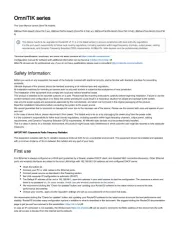
19 Juli 2025
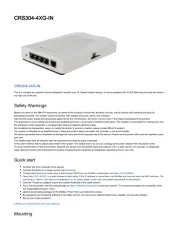
19 Juli 2025
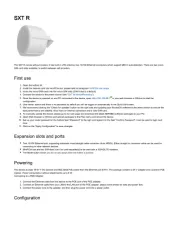
19 Juli 2025

5 September 2024

4 September 2024

1 September 2024

27 August 2024

26 August 2024

26 August 2024

26 August 2024
Bedienungsanleitung Nicht kategorisiert
- Polar
- Astropet
- Scosche
- Dedra
- Max Pro
- Richgro
- CDN
- WHD
- Greenworks
- Telefunken
- Babybjörn
- Goaliath
- Milan
- Smeg
- Pearl Sports
Neueste Bedienungsanleitung für -Kategorien-

19 Juli 2025
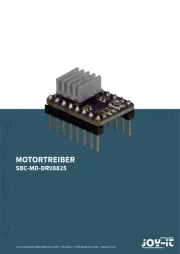
19 Juli 2025

19 Juli 2025

19 Juli 2025
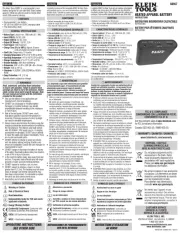
19 Juli 2025

19 Juli 2025

19 Juli 2025

19 Juli 2025

19 Juli 2025
